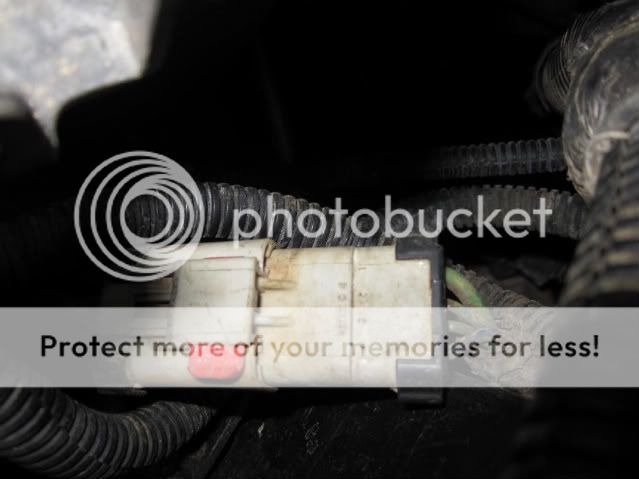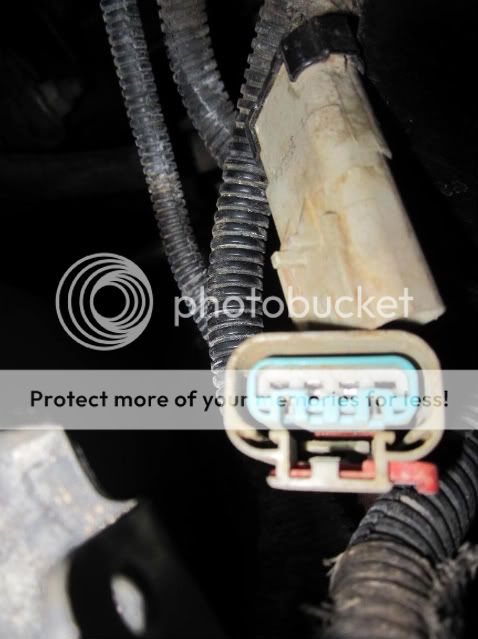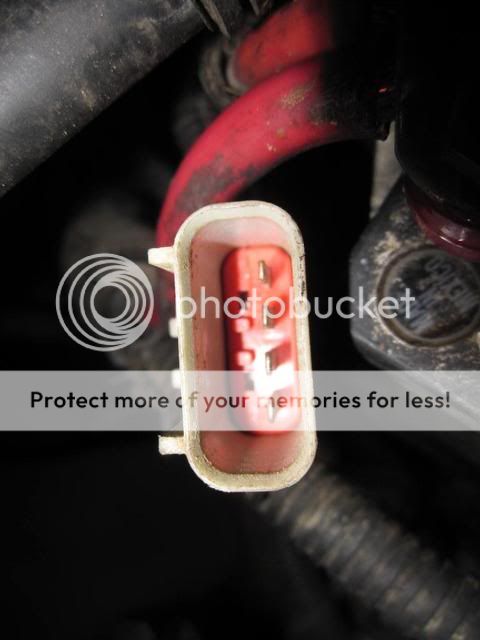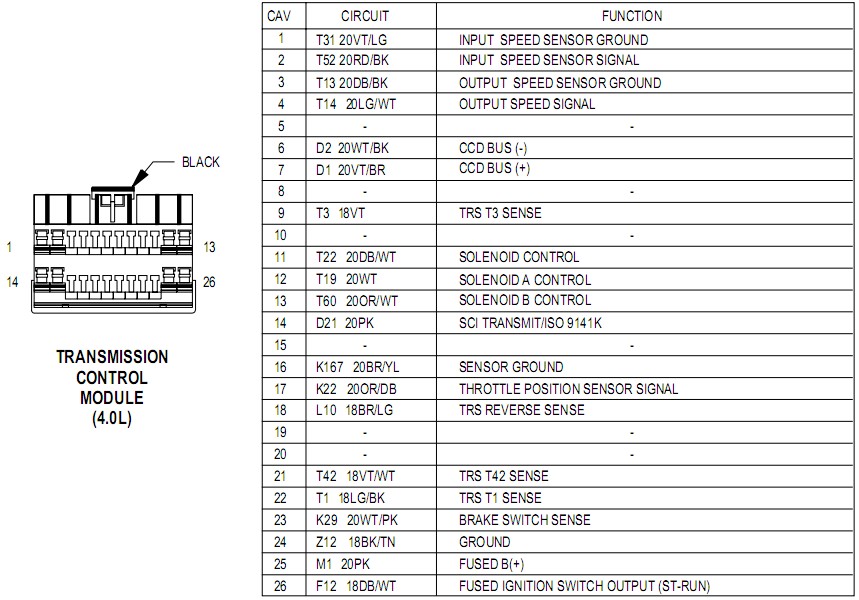A Jeep Cherokee with an AW4 transmission comes into the shop with a 4th- gear-start complaint. Sometimes the customer describes it as a slip or loss of power. So you go to hook up your scan tool to get codes and soon find out that with- out the 4.7 or later version Domestic cartridge for the Snap- on MT2500 Scanner you cannot re- trieve fault codes. And if you do not own a Snap-on Scanner, you’ll have to go to a Chrysler dealer- ship to get codes with its DRB scan tool. Without access to either a Snap-on Scanner and its late car- tridge or a DRB III scan tool, there are no other methods whereby codes may be retrieved. Now what? It’s DVOM time. No, this does not mean Drive Vehicle Off Mountain. It means it’s time to use that brand-new digital volt/ohm- meter sitting in that especially clean drawer of your toolbox. You have been waiting to use it, and now you have the chance to prove to your boss why you deserve a raise. The first step is to drop the panel below the glove box and lo- cate the TCU (Transmission Control Unit, which at the mo- ment could be a Transmission Confused Unit). In the harness near the TCU unit you will find a 15-amp in-line fuse on a yellow wire with a resistor pack just a lit- tle farther downstream on the same wire (See Figure 1). This wire provides battery feed to the TCU via the ignition switch. If the fuse is blown, the TCU cannot op- erate the transmission, which de- faults to 4th gear. To check the power circuit, con- nect your voltmeter’s negative lead to a known good ground. Turn the igni- tion to the “on” position and, with the posi- tive meter lead, verify the exis- tence of battery voltage at termi- nal D16 in the unplugged TCU connector (See Figure 2 for con- nector view and terminal ID). If the fuse is blown, the resis- tor pack may be shorted to ground or shorted across itself and will need to be replaced. The part number for a new resistor pack is 83504880. When the fuse and resistor pack are known to be good, battery voltage should be seen at D16. Terminal C10 should have battery voltage only when the brake is depressed. When the brake is released, C10 should drop to 0 volts. If battery voltage is not seen at either D16 or C10 and the fuse and resistor pack are known to be good, the ignition switch or the wire from the ignition switch is bad and will need to be re- paired. Once the TCU power supply has been verified to be in good working order, road-test the vehi- cle. If the vehicle still takes off in 4th gear, check terminal D14 for battery voltage. This is direct bat- tery feed into the TCU and should be hot with the key on or off. If voltage is not seen, run your own wire into the connector from the battery through a 10-amp fuse and you’re done. However, if you still have 4th-gear starts after this re- pair, either the TCU is bad or other electrical problems remain. When faced with this situation you have three choices: 1. Get a scan tool that will give you codes 2. Take a chance and change the TCU, or 3. Perform a step-by-step pin check from the TCU connector to determine the elec- trical failure. Figure 3 is a chart providing the values you should observe when performing a pin test at the TCU connector. Most of the testing is to be per- formed by carefully back-probing each wire with the connector plugged into the TCU unless oth- erwise instructed. (A company called J.S. Popper in New Jersey sells test leads designed to do this kind of work, limiting the possi- bility of damaging the wire or connector.) In the chart you will see an asterisk next to the neutral- switch and comfort-switch checks. If battery voltage is not seen as in- dicated in the chart on both sen- sors, check for a blown 7.5-amp #13 fuse in the main fuse panel. Figure 4 provides a partial wiring schematic for the purpose of wire color identification. If each pin check falls within the proper spec- ification, you can safely say your TCU is a Transmission Condemned Unit. For those of you who own a Snap-on Scanner with the 4.7 or later version Domestic cartridge, here are the codes and the data-stream info
Jeep AW4 Transmission Application 1987-1990 – Jeep 2.5L & 4.0L Cherokee & Comanche 1991-1993 – Jeep 4.0L Cherokee & Comanche 1994-1997 – Jeep 4.0L Cherokee The AW4 TCU is capable of producing three different code types: CURRENT CODE will be displayed only while condition that set it still exists. STORED CODES are stored in memory. Condition that caused code to set still may exist. STATUS____/____ codes are in codes and data display. If condition causing code no longer exists, stored code will be erased after about 75 key cycles. 1987 To 1990 Codes 1991 & Later CODE 700 – SOLENOID FAULTS (ALL 3) CODE 700 – SOLENOID #1 CODE 701 – POWER COMFORT SWITCH FAULT CODE 700 – SOLENOID #2 CODE 702 – SPEED SENSOR FAULT CODE 700 – SOLENOID #3 CODE 703 – GEAR SELECT FAULT CODE 702 – SPEED SENSOR FAULT CODE 704 – NO SERIAL DATA CODE 703 – GEAR SELECT FAULT CODE 705 – TPS FAULT CODE 704 – TPS FAULT CODE 706 – BRAKE SWITCH FAULT CODE 708 – WRONG TCM CODE 707 – TEMP GROUND FAULT CODE 702 – WRONG TCM CODE 709 – IGNITION LINE OFF WITH KEY ON CODE 710 – INTERMITTENT SOLENOID FAULT Data Stream Parameters BRAKE PRSD/RLSD (Pressed/Released) CURRENT GEAR: 1st, 2nd, 3rd, 4th LOCKUP: ON/OFF MODE: POWER/COMFORT (1992 & later always reads power, switch eliminated) MODULE: 01/02 (01 = 4.0L, 02 = 2.5L) PRNDL: PRND, 3, 1-2 RPM: OUTPUT SHAFT RPM SOLENOID 1: ON/OFF SOLENOID 2: ON/OFF SOLENOID 3: ON/OFF (TCC) Wayne Colonna is technical supervisor for the Automatic Transmission Service Group (ATSG) and a frequent contributor to Transmission Digest

C3-Key on Engine Off. Meter set to DC volts. 5- to 8-volt Speed Sensor pulse per one revolution
C8 Key On Engine Off. Selector Lever in the 1-2 Battery Voltage* position. Meter set to DC volts.
C9 Key On Engine Off. Selector Lever in the D Battery Voltage* position. Meter set to DC volts. Key On Engine Off. Meter set to DC volts
C10 Brake OFF. . . . . . . . . . . . . . . . . . . . . . . . . . . . . . . . . 0 Volts Brake ON. . . . . . . . . . . . . . . . . . . . . . . . . . . . . . . . . . Battery voltage Key On Engine Off. Meter set to DC volts
C11 Comfort switch in POWER mode . . . . . . . . . . . . . . . Battery Voltage Comfort switch in COMFORT mode . . . . . . . . . . . . . 0 volts Key Off. TCU unplugged. Meter set to Ohms
D7 on neg. and C14 Converter Clutch Solenoid Resistance 11-15 ohms
C15 Key Off. TCU unplugged. Meter set to Ohms Shift Solenoid #2 11-15 ohms
C16 Key Off. TCU unplugged. Meter set to Ohms Shift Solenoid #1 11-15 ohms
D1 Key On Engine Off. Meter set to DC Volts TPS Voltage Supply Approx. 5 Volts Key On Engine Off. Meter set to DC Volts
D2 TPS Voltage Input Closed Throttle . . . . . . . . . . . . . . . . . . . . . . . . . . . . . Approx. 4.5 Volts Wide Open Throttle. . . . . . . . . . . . . . . . . . . . . . . . . . Approx. 0.5 Volts
D3 Key On Engine Off. Meter set to DC Volts 0.1 Volt TPS Ground or less
D14 Key Off. Meter set to DC Volts Battery Voltage
D16 Key On Engine Off. Meter set to DC Volts Ignition Voltage Battery Voltage
Really hope this helps someone else I've searched for over 2 days to find something like this
GOOD LUCK
Travis








